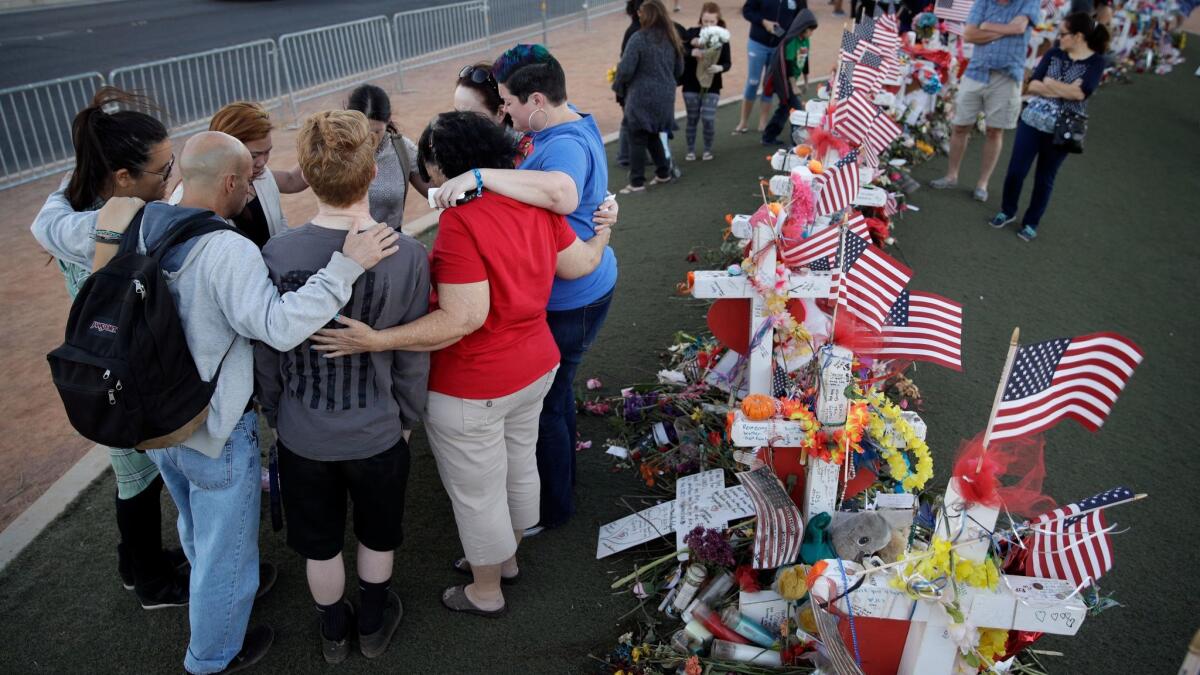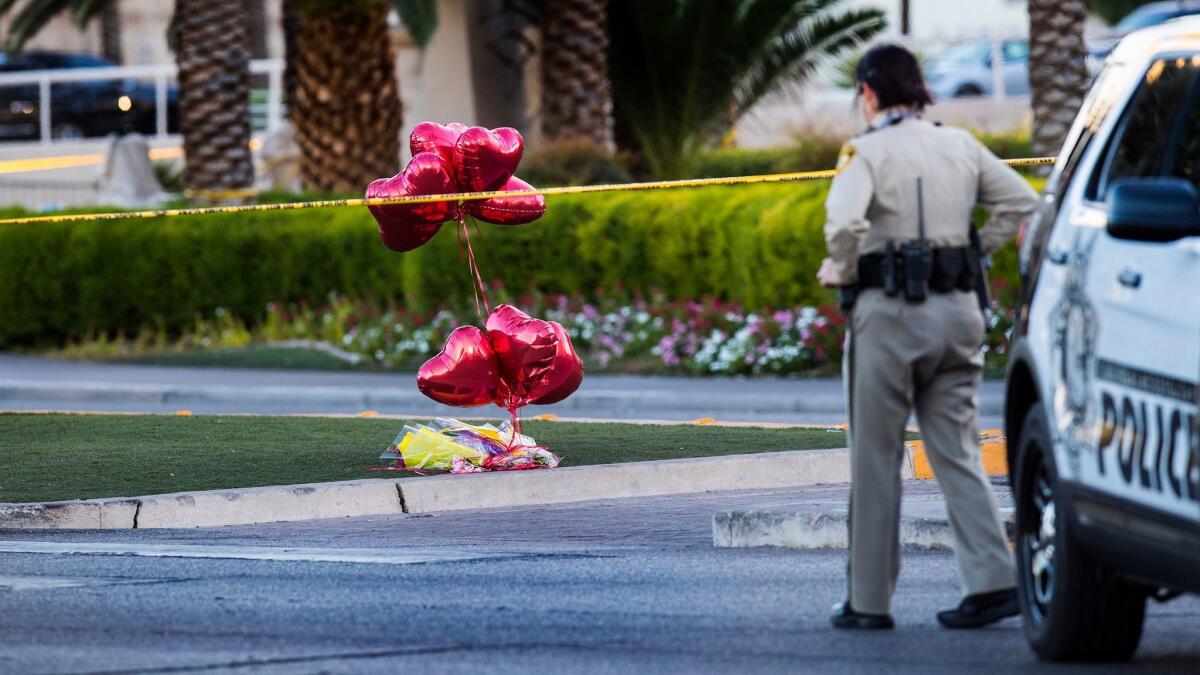What drove Las Vegas shooter to kill? We donât know, and it drives us crazy

We need to know.
Close to two weeks after 64-year-old Stephen Paddock rained down bullets on attendees of a country music festival in Las Vegas, killing 58 and injuring nearly 500 others, investigators are no closer to understanding the gunmanâs motives.
For a nation riveted by the deadliest mass shooting in recent U.S. history, this is a deeply unsettling problem.
Police detectives and criminal profilers are working overtime in their efforts to dissect Paddockâs behavior, circumstances and psychological state in the lead-up to the shootings. Mental health professionals and experts on human behavior, meanwhile, are bearing witness to a more common and less mysterious response on the part of Americans: a sense that without an explanation for Paddockâs actions, we cannot psychologically close the chapter on this shooting.
âThe lack of explanation here is bothering us on an almost existential level,â said psychologist Yuval Neria, an expert on post-traumatic stress disorder at Columbia University in New York. Itâs an anguish Neria says he has heard in his lab and in his clinical practice, from people who have followed the unfolding horrors from afar and from those with direct ties to the shooting.
âIt is an unconscious and profound human trait to seek a motive for catastrophic violence. It is a means of self-defense,â said Jeff Victoroff, a professor of psychiatry and neurology at USC and an expert in trauma, terrorism and human aggression. âPeople need to make contingency plans â to protect themselves â by assigning a motive, recognizing people with that motive, and staying away from them.â
As parents, we do this almost effortlessly to calm an anxious child. We put the threat at a distance. We cast the perpetrator as âother,â someone we could not possibly know. We promise our protection.
Now, parents and other adults have seen for themselves that concert-goers can be mowed down from 32 stories up. They may be forced to accept that an amiable-if-distant neighbor â a seemingly successful man with no known history of mental instability â can inexplicably kill people against whom he bears no apparent grudge.
âItâs unbearable,â said Victoroff. Without actionable answers that make Paddock a rare and distant monster, he said, âyou are paralyzed.â
In humans, trauma awakens a powerful urge to âmake meaningâ â to explain what cannot readily be explained, said Columbiaâs Neria. And national traumas, especially those stoked, magnified and spread by wall-to-wall media coverage, make that urge a widely shared need.
One of the hallmarks of PTSD is hypervigilance, Neria noted. Thatâs when a suffererâs ability to distinguish safe places from dangerous ones has broken down. Unfortunately, the continuing gap in understanding about what drove Paddock to kill has eroded that distinction, he said. For many Americans, it is a taste of what life is like for those with PTSD.
Prayers and appeals to unity can fill the void that uncertainty creates. And sometimes, thatâs enough, experts said.
We donât feel safe until we know.
— Charles R. Figley, director of Tulane Universityâs Traumatology Institute

âWe donât feel safe until we know, and explanation abhors a vacuum,â said Charles R. Figley, a psychologist who directs Tulane Universityâs Traumatology Institute in New Orleans.
âPeople make up stuff,â Figley said. âThatâs why we pray and ask God to protect us, to make sure that good people donât get hurt. We start constructing explanations that at least make us feel better.â
In normal times, Figley said, this process gets an assist from public figures. People who feel threatened naturally gravitate to people they trust, he said â a community of people âlike us.â In such instances, a leaderâs âcome togetherâ message aims to shape and broaden that community. In the absence of a clear explanation for trauma â after a natural disaster, for instance â a leaderâs words are meant to inspire confidence that, even in a random world, Americans can rely on each other.
But these are not normal times, Figley said. In a country riven by deep political and social divisions, the absence of an explanation for Paddockâs actions leaves many wondering, âWhoâs on my side?â And in the absence of effective appeals to unity, he said he fears that anxious Americans will likely retreat more deeply into their partisan echo chambers.
President Trump has done little to bring Americans together and help them move forward, Figley said. Despite an absence of evidence, Trump pronounced Paddock âsickâ and âdemented.â
Trumpâs characterization of Paddock as mentally ill may help the president feel better by providing a simplistic motive for the shooting, said Dr. David Spiegel, a Stanford University psychiatrist. But it is a poor response to a phenomenon that is actually quite easy to explain.
The reason Paddock could kill so many people in a 10-minute spasm is that he had ready access to the means to do so, Spiegel said. The real explanation, he said, lies with guns and a culture that puts âridiculous firepowerâ in virtually anyoneâs hands.
âThereâs nothing sick about him,â Spiegel said of Paddock. âAs a psychiatrist, I deeply resent the inference that anybody who does something like this is mentally ill. Itâs untrue and deeply unfair to people with mental illness.â
Finally, Spiegel warns, when people reflexively accept a âmental illnessâ explanation for mass shootings, they are playing into the hands of the gun-rights advocates who would foil any effort to stem the tide of weapons in America.
âWe all want to feel in control of things we canât control,â said Spiegel, who directs Stanfordâs Center on Stress and Health. âWe want to play this narrative in our heads that we can avoid these people. But whatâs really chilling is that no matter where you go or what you do, thereâs a coldblooded guy with a gun who could take you out.â
Under the circumstances, he said, âwe ought to be anxious.â
MORE IN SCIENCE
Beyond the orbit of Neptune, a dwarf planet is found to have a ring







